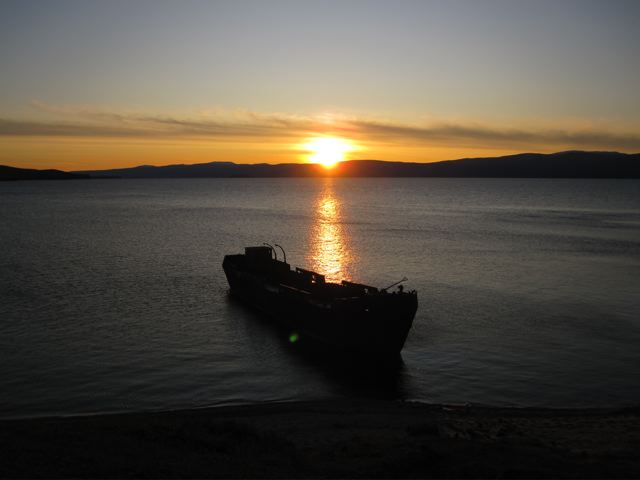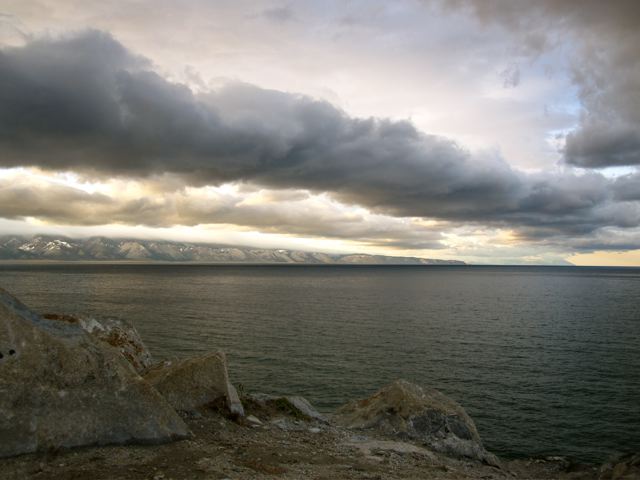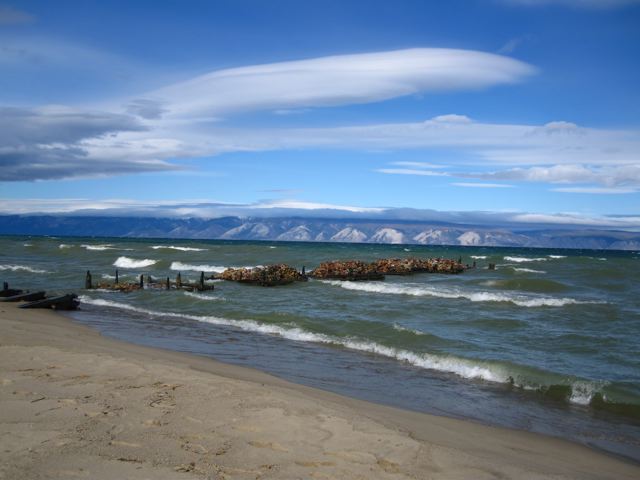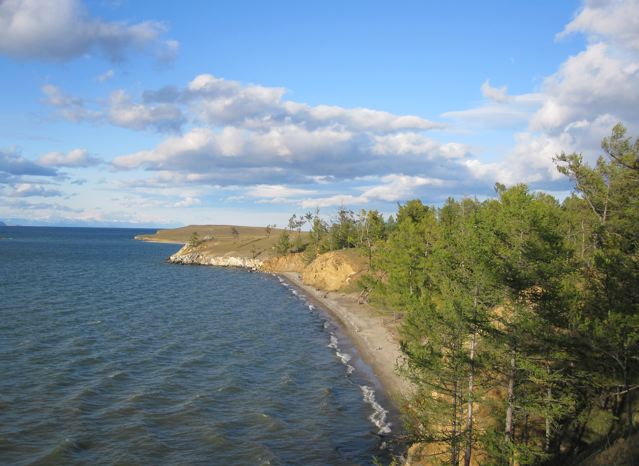Lake Baikal is the oldest, deepest, and most voluminous lake in the world. Situated in the heart of Siberia, it contains a mind-boggling 22–23% of the planet’s freshwater—more than all five of North America’s Great Lakes combined. It is said that it would take all the water currently flowing in all the rivers on earth one full year to fill it. By any criteria, it is one of the world’s most incredible natural wonders, with Olkhon, its own natural wonder, the largest and most populous island that lies within its boundaries.
I hiked the Olkhon Island Trek in the fall of 2009. All logistical details have been updated as of April 2020.
At a Glance
Distance: 37 km (23 mi)
Average Time: 1 or 2 days
Difficulty: Easy
Start / Finish:
- Cape Khoboy to Khuzir.

Overview map of the Olkhon Island Trek (From “The Hidden Tracks“; the second book of my Wanderlust series with Gestalten Publications).
Getting There & Away:
- Olkhon Island is situated midway along the western shore of Lake Baikal. It is accessed via a short ferry ride from Sakhyurta.
- The closest city is Irkutsk. During the summer there are daily buses between Irkutsk and Khuzir. The journey takes about seven hours. Click here for details.
Season: June – October
Highlights: Cape Khoboy, Three Brothers rocks, secluded coves, Shaman Rock, watching sunsets over Lake Baikal.

On the ferry from Sakyhurta to Olkhon Island.
Maps and Information
- Map / Navigation: Click here for a basic map of Olkhon Island. The hike from Cape Khoboy to Khuzir is not an established hiking trail. That being said the terrain is relatively gentle and navigating is simply a matter of heading SE along the coast back to Khuzir.
- General Information: See the Way to Russia website for a good overview of the island and the Lake Baikal region.
- Geography: Olkhon is the largest island on Lake Baikal. Measuring approximately 72 km (45 mi) in length and 15 km (9 mi) in width, it is a combination of coniferous forest (taiga), grassland (steppe), and even a small desert.
- Flora & Fauna – Freshwater seal: Lake Baikal is home to the Nerpa, one of the world’s most unique aquatic animals. One of the smallest of its kind, this earless animal owes its singularity to being the planet’s only completely freshwater species of seal. Which begs the still definitively unanswered question: how did the Nerpa originally get to Lake Baikal, which is situated thousands of kilometers from both the Pacific Ocean to the west and the Arctic Ocean to the north?
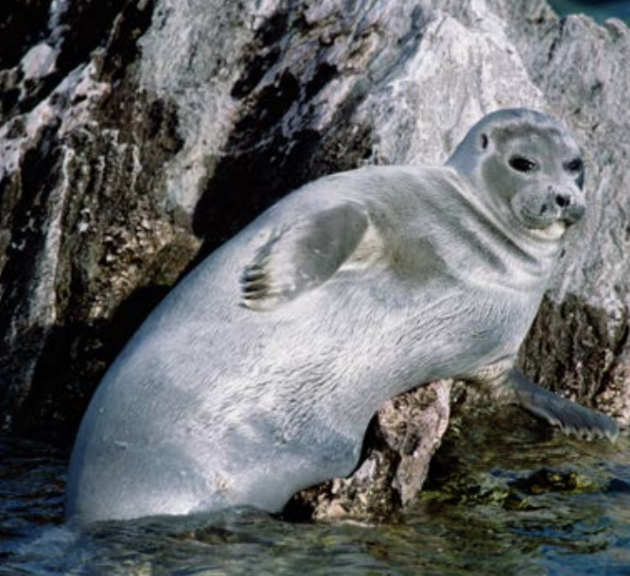
The Nerpa, or Baikal seal, is the world’s only species of freshwater seal (Photo from the Olkhon Island chapter of “The Hidden Tracks“).
- Shamanism: For centuries, Olkhon Island has been home to the Buryats, a northern subgroup of the Mongols, who are adherents of shamanism. The island is considered to be one of the centers of the practice, and the Buryats believe that it represents one of five global poles of shamanic energy. Of the many sacred sites on Olkhon, the most famous is that of Shamanka, or Shaman Rock, situated a short walk from Khuzir.
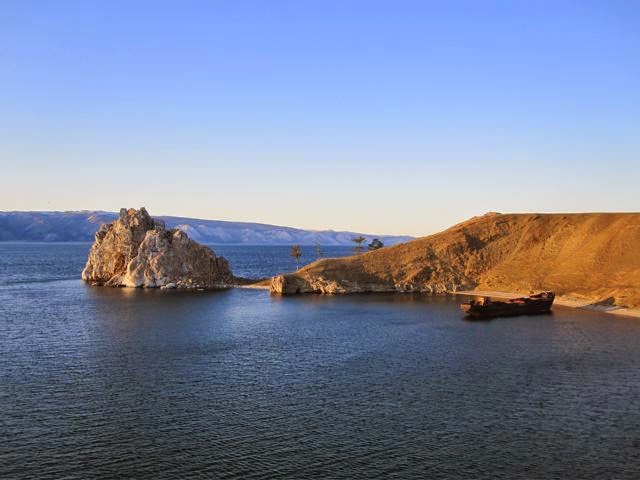
Shaman Rock (on the left). According to legend, Azhin, Lord of Lake Baikal, lives in the cave, and local shamans still perform cleansing rituals there.
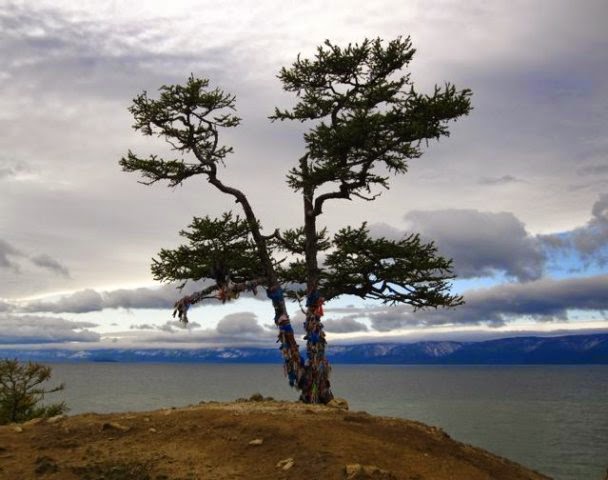
The headland at Shaman Rock makes for a great place to watch the clouds roll by over the lake.
- Food and water: During the hike, water can be obtained from the lake, though filtering or purifying is recommended. With regard to supplies, bring all that you need from the island’s main village of Khuzir, which will act as your base during your time on Olkhon.
- Accommodation: Options are limited in the northern part of the island, so you will need to bring a tent. Finding places to camp is, gladly, a non-issue: camping is legal and free practically anywhere along the island’s beautiful coastline. While in Khuzir, Nikita’s Guest House is a fantastic spot to use as your base. Accommodation and three meals a day for around US$30 (as of 2009). Great food, atmospheric bar, ping pong tables (Nikita himself used to be on the Russian national team; his young son also plays a mean game) and an authentic Siberian bathhouse.
- Future visit?: One of these days I would love to return to Siberia to hike or volunteer on the Great Baikal Trail. At the time of writing (2020), the trail is still a work in progress.
Trekking Notes
(The notes below are from the Olkhon Island chapter of “The Hidden Tracks“, the second book in my Wanderlust series with Gestalten publications).
“The featured hike begins at Cape Khoboy, the northernmost part of the island. Regular tours from Khuzir visit this scenic, rocky outcrop, and they have no problem dropping you off so that you can return on foot. Before beginning the trek, be sure to make the short walk out to the tip of the cape. Marked by a large cairn and totem pole and with dramatic red cliffs on three sides, the sweeping views from this lookout are among the best on the island. If you are lucky, you may even spot a Nerpa, the world’s only freshwater seal.

Yours truly at Cape Khoboy – the starting point for the Olkhon Island Trek.
The trek from Cape Khoboy back to Khuzir is not an established trail. That said, the terrain is relatively gentle and open, and navigating is simply a matter of heading southwest in close proximity to the coast; it would be very difficult to get lost on this hike. After leaving the Cape, the first notable feature you will encounter is the “Three Brothers” rock formation. According to Buryatian legend, this trio of outthrust blocks represents three brothers who were turned to stone for disobeying their father. Considering that they were eagles beforehand, it was a significant demotion, and the tale has no doubt featured in many a warning to children of the island as to the consequences of disobeying their parents.
From the Three Brothers, the route continues hugging the island’s western coastline. Along the way, hikers are gifted a bird’s-eye view of the color metamorphoses for which the lake is renowned. Clouds drift, winds rise, the angle of the sun changes ever so subtly, and each meteorological variance is mirrored by a corresponding alteration in the water below. It is a riveting interplay between the elements of air and water, and there is no better way to watch it unfold than from the terra firma of Olkhon Island.
Approximately 20 kilometers (12 miles) after leaving the Cape, you will arrive at a mysterious place by the name of Peschanaya. During Soviet times, this was a correctional facility that was part of the infamous Gulag system, forced labor camps that housed prisoners from the 1920s through to the mid-1950s. For the most part, detainees at Peschanaya worked at an on-site fish factory and sawmill. Nowadays, most of the long-abandoned buildings have been covered by sand, and all that remains visible are a couple of houses and a broken-down bridge.
Not long after departing Peschanaya, you will reach a series of beaches perfect for camping. By this time it will likely be late afternoon, and all that is left to do is find a nice spot to pitch your tent and prepare to watch the sunset over Lake Baikal. As you sit outside your tent shelter listening to the rhythmic sound of the waves lapping upon the shore, it is impossible not to be blown away by the sheer immensity of this particularly resplendent jewel in Siberia’s mighty crown the jewel of Siberia. As deep as an ocean and as large as a sea, this 30-million-year-old body of water is guaranteed to take even the most seasoned of wayfarer’s breath away.”
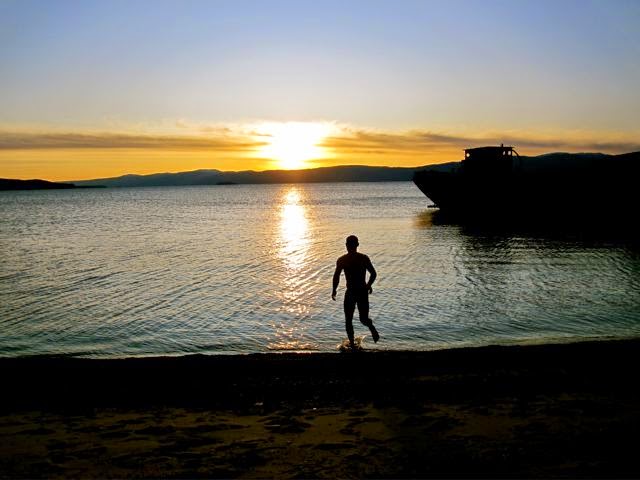
I did the Olkhon Island Track in one day, arriving back at Khuzir as the sun was setting. I celebrated by taking a bracing swim!
